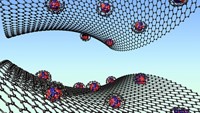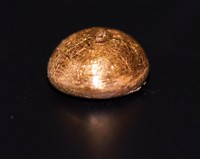Advertisement
Grab your lab coat. Let's get started
Welcome!
Welcome!
Create an account below to get 6 C&EN articles per month, receive newsletters and more - all free.
It seems this is your first time logging in online. Please enter the following information to continue.
As an ACS member you automatically get access to this site. All we need is few more details to create your reading experience.
Not you? Sign in with a different account.
Not you? Sign in with a different account.
ERROR 1
ERROR 1
ERROR 2
ERROR 2
ERROR 2
ERROR 2
ERROR 2
Password and Confirm password must match.
If you have an ACS member number, please enter it here so we can link this account to your membership. (optional)
ERROR 2
ACS values your privacy. By submitting your information, you are gaining access to C&EN and subscribing to our weekly newsletter. We use the information you provide to make your reading experience better, and we will never sell your data to third party members.
Catalysis
This catalyst is a golden egg
Eggshells impregnated with gold nanoparticles make an easy, cheap, and reusable ‘megacatalyst’
by Prachi Patel, special to C&EN
November 22, 2022

By infusing eggshells with gold nanoparticles, researchers have made a low-cost, sustainable catalyst that can be reused and eventually recycled (ACS Appl. Mater. Interfaces 2022, DOI: 10.1021/acsami.2c13564). They used the robust “megacatalyst” to detoxify dye waste and run other organic reactions by dropping the eggshell catalyst into reaction solutions, and they could simply remove it by hand when done.
Typically, to make nanoparticle catalysts easy to reuse, chemists anchor them to porous materials such as hydrogels and metal-organic frameworks. These impregnated materials are easy to separate from a reaction mixture, but making them is laborious and expensive. Also, recovering the metal from the support material usually requires time- or energy-intensive methods like magnetic separation and centrifugation.
Anil K. Suresh of SRM University, Andhra Pradesh, and colleagues chose eggshells as supports because of their high porosity and large surface area with a protein layer rich in amino acids. The team dipped waste eggshells collected from restaurants in a suspension containing gold chloride for 6 h, and amino acids on the shells reduced the gold ions to form crystalline gold nanoparticles. Suresh claims this is the simplest synthesis of a supported catalyst ever reported.
The researchers tested the recyclability of the eggshell catalyst by using it to detoxify dye waste from local textile operations. They reused the eggshell 14 times to break down a total of 2.8 L of waste. They also used a gold-infused eggshell to make several grams of a precursor to acetaminophen by hydrogenating 4-nitrophenol, with a conversion efficiency of 99%.
Dipping the eggshell in nitric acid and hydrochloric acid dissolved the protein layer on its surface, releasing the nanoparticles and allowing the team to recoup about 77% of the gold. Suresh says he and his colleagues have also have grafted catalytic silver and copper oxide on eggshells and are now working on methods to do this for platinum and palladium.
Update
This story was updated on Nov. 22, 2022, to spell out the full name of the university Anil K. Suresh is affiliated with. It is SRM University, Andhra Pradesh. The abbreviated name is SRM University–AP.




Join the conversation
Contact the reporter
Submit a Letter to the Editor for publication
Engage with us on Twitter